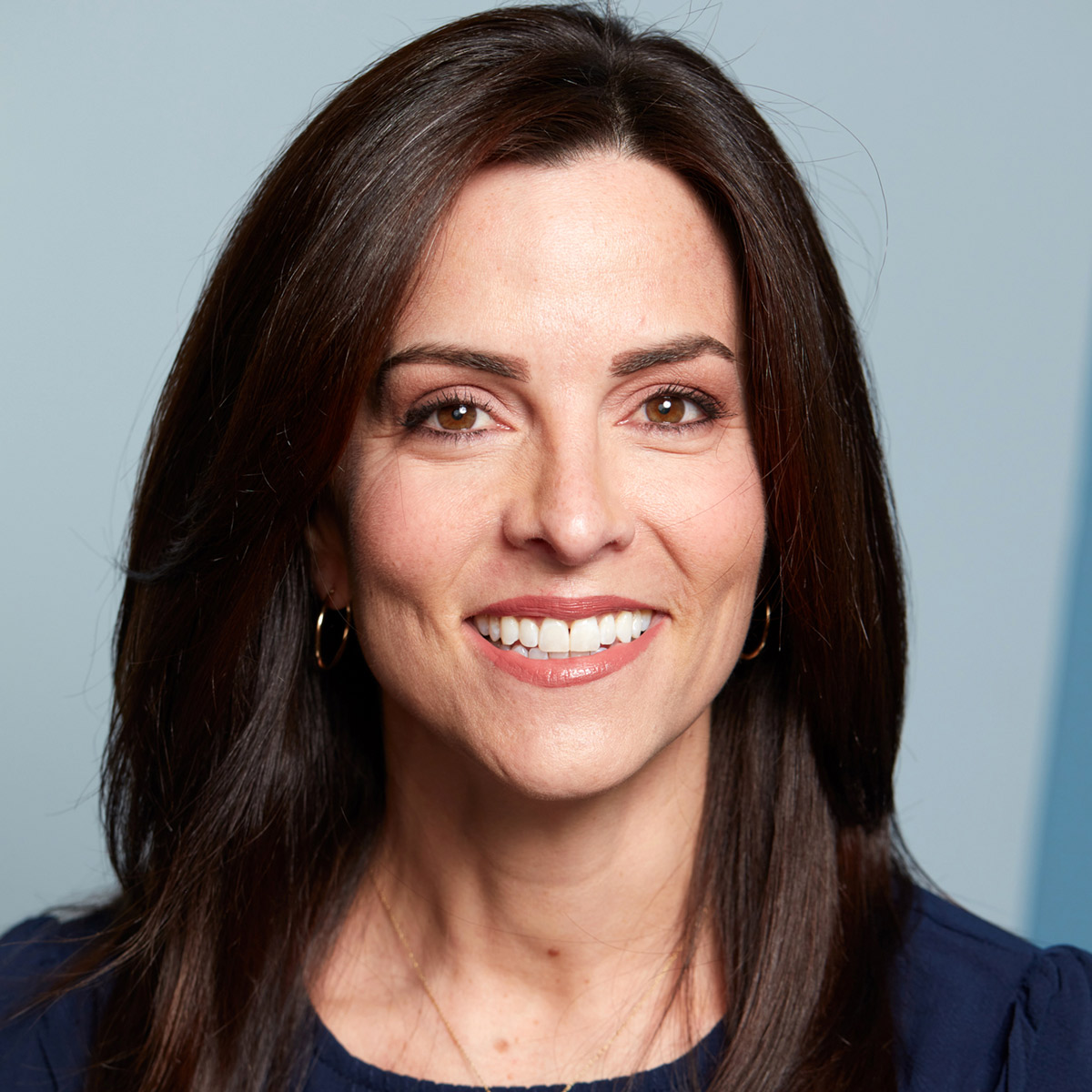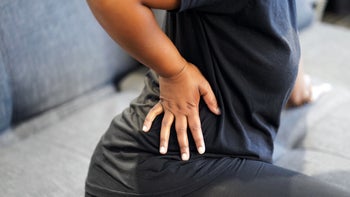
Got a Crick in the Neck? Here’s What to Do About It
Key takeaways:
A crick in the neck refers to neck stiffness, often with pain or difficulty turning your head.
Muscle strain — from holding your neck in an awkward position — commonly causes a crick in the neck.
Symptoms usually go away in 1 to 2 weeks with at-home treatments.

A crick in the neck (also called a “crook” in the neck) is a common ailment that refers to neck stiffness. It can be uncomfortable or painful and make it difficult to turn your head. And it can happen to anyone, whether you slept awkwardly or sat at the computer for too long.
But you don’t have to deal with discomfort for too long. At-home treatments usually help resolve a crick in the neck. Small lifestyle changes might help you avoid one altogether.
What is a crick in the neck?
A crick in the neck is a broad term for neck stiffness or pain that can hinder your range of motion. And it usually happens suddenly. For example, you might wake up with tense neck muscles that make it hard to turn your head from side to side. Or you might have trouble looking over your shoulder or sitting at your desk for prolonged periods.
Search and compare options
Typically, it’s not serious, and symptoms will subside in a few days or weeks. But a crick in the neck isn’t an official medical diagnosis. So, it can refer to several kinds of neck problems that may have various underlying causes. Those causes will help you figure out the best treatment.
What are the symptoms of a crick in the neck?
If you have a crick in the neck, you may have stiffness without pain. But most often, you’ll have both. You may find it more challenging to turn your head to one side, and you’ll compensate by turning your shoulders or entire body.
Here are the most common symptoms:
Neck stiffness
Limited or reduced mobility that makes it hard to move your neck or turn your head
Neck or shoulder pain that’s more noticeable with movement
Muscle knots or spasms
Feeling like your neck needs to pop
Popping sounds when moving your neck
Difficulty sitting at your desk for prolonged periods due to fatigue and pain
What causes a crick in the neck?
Injury to the neck muscles, tendons, or ligaments is the most common cause of a crick in the neck. This acute, nonspecific neck pain or stiffness isn’t caused by a health condition. These musculoskeletal problems are usually the cause.
Muscle strain
A muscle strain occurs when you overstretch a muscle, which damages or tears muscle fibers. This injury is the most common culprit behind a crick in the neck.
Muscle strain often involves the levator scapulae that runs along the outside of your neck to the shoulders. This muscle allows you to lift or shrug your shoulders. It also helps you flex your neck muscles to tilt your head.
Exercises for neck pain: Try targeted stretches and strengthening exercises to ease neck pain and stiffness.
Not sure how to sleep with neck pain? These sleep positions may reduce neck pain and help you get comfortable.
Proper posture can help prevent neck pain. Consider these tips to improve your posture.
A cervical or neck muscle strain may be triggered by:
Holding your head in an awkward position for extended periods
Maintaining poor posture — like slouching — at your desk
Looking down at your phone for long periods causing “text neck”
Sleeping in an awkward position
Lifting heavy objects or other activities that cause overuse injuries while working, exercising, or playing sports
Neck sprain
The ligaments in your neck keep your cervical spinal column stable. When they are damaged, it causes a neck sprain, which can give you a crick in the neck. Impact injuries or sudden, forceful movements can lead to a neck sprain. Most people will feel the most pain and stiffness a day or two after the injury. You can get a neck sprain from:
A fall
Trauma, such as whiplash from a car accident
Sudden movements that turn or twist your neck
Sports, such as football, basketball, and wrestling
Repetitive movements that stress your neck, such as during horseback riding or painting overhead
Musculoskeletal health conditions
In some cases, a crick in the neck may result from specific underlying conditions that cause cervical pain, muscle spasms, and stiffness. The following are less common causes of a crick in the neck:
Cervical herniated disc: When a cervical disc bulges, it puts pressure on the nerves. A cervical herniated disc causes neck pain, along with tingling and numbness down your arm.

Cervical disc degeneration: This often happens to people 40 and older. In cervical disc degeneration, the fluid in the cervical disc deteriorates, resulting in less space between the vertebrae and neck pain and stiffness.

Cervical spondylosis: Arthritis of the cervical spine causes pain and stiffness. This is also known as cervical osteoarthritis.

Mental health concerns
Your mental health may also be a factor in stiff, achy neck muscles. It’s likely because psychological stressors make you tighten your neck and shoulder muscles, triggering muscle knots or spasms. Certain stressors can also raise your attention to the perception of physical pain. According to a recent study, the following mental health concerns can contribute to neck pain:
Long-term stress
Anxiety
Depression
Lack of social support
10 treatments for a crick in the neck
In most cases, your crick in the neck should go away in 1 to 2 weeks. The following treatment options may help you heal faster.
1. Rest
It’s important to avoid activities that can irritate your neck. Examples include lifting, high-impact exercises, and certain sports, like tennis, golf, or contact sports. A break will help limit inflammation and allow your tense muscles to relax. After 2 to 3 weeks, you can slowly return to your regular activity.
Unless a healthcare professional says otherwise, you should avoid wearing cervical collars. A review showed that long-term use makes cervical muscles stiffer and weaker.
2. Practice gentle exercises and stretches
Rest doesn’t mean you have to avoid all physical activity. Gentle neck stretches and strengthening exercises help lessen neck pain and stiffness. And studies show they may also prevent a future occurrence. Try including these neck exercises in your daily routine.
3. Take over-the-counter pain relievers
You can take a short course of nonsteroidal anti-inflammatory drugs (NSAIDs) to ease pain and inflammation. These include ibuprofen, such as Advil and Motrin, and naproxen sodium, such as Aleve. Tylenol will lessen pain but doesn’t have anti-inflammatory properties.
4. Try ice or heat therapy
Ice and heat can help you soothe sore neck muscles at home. Apply an ice pack for the first 48 to 72 hours to help limit inflammation. After that, use a heating pad on the stiff and sore muscles to help boost circulation and improve movement.
5. Adjust your sleeping position as needed
The right sleeping positions for neck pain take the stress off your neck. A 2019 review found that sleeping on your side is the best position to ease neck pain. If shoulder pain makes side sleeping uncomfortable, lying on your back is the next best option. Sleeping on your stomach isn’t recommended.
6. Sleep on a supportive mattress and pillow
A medium-firm mattress with a supportive pillow can help your neck heal and prevent future problems. Your pillow should keep your neck and spine aligned. Memory foam or latex pillows may ease neck pain and promote deeper sleep. You can also roll up a small towel and place it in the arch of your neck for added support.
7. Evaluate your workstation
An ergonomic workstation can help prevent a crick in the neck and other aches and pains. Make sure your desk, computer, and other office equipment are properly set up. This will reduce the likelihood of holding your neck in awkward positions for long periods. Stand up and take frequent breaks to keep your muscles loose and avoid pain while sitting at your desk.
8. Manage stress
Learn how to manage stress in healthy ways, such as exercising, listening to music, or talking to a friend or therapist. Regular massages — especially when combined with exercise — may soothe neck pain. It can help you relax and feel less anxious.
9. See a physical therapist
You can also see a physical therapist for evaluation and hands-on treatment. They can use trigger point release, acupressure or acupuncture, and other methods to relieve a crick in the neck. Transcutaneous electrical nerve stimulation (TENS), for example, may help you regain a full, pain-free neck range of motion.
10. Try a muscle relaxer as a last resort
Your doctor or other healthcare professional may prescribe a muscle relaxer to help loosen muscle knots and tight neck muscles. Some examples include Valium, Flexeril, or Soma. They can be useful in helping with pain for some, but there isn’t strong research to back them up. Muscle relaxers should only be taken for a short period. They also have side effects to be aware of, which include drowsiness, dizziness, headache, and dry mouth.
When should you see a healthcare professional for a crick in the neck?
If your neck pain and stiffness doesn’t go away or improve after 1 week of at-home treatment, call your primary care provider for a checkup. If your crick in the neck doesn’t start to improve or gets worse in 24 hours, call your primary care provider to discuss.
In the following cases, you should get medical help right away for neck stiffness or pain:
After an injury, including a car accident, fall, or blow to the head
Pain or numbness down your arms that causes weakness
Difficulty with fine motor skills, including handwriting, grasping objects, or using a zipper
Continuous and persistent severe pain
Pain that wakes you up at night
Neck stiffness accompanied by fever, headache, nausea, vomiting, or sleepiness
Frequently asked questions
If your neck is in an awkward position for a long time while sleeping, it can strain the muscles and nerves that support your neck. This can cause muscle knots and spasms that lead to waking up with a crick in your neck. Using a pillow that doesn’t support your neck properly is often the cause.
Icy Hot is a cream, gel, or patch that you apply to sore muscles. And it can provide temporary relief from a crick in the neck. It contains menthol, which gives you a cooling sensation followed by a warming sensation. Experts say this helps distract you from the pain by blocking pain signals (called the gate control theory of pain). It doesn’t actually heal damaged tissues, but it can provide relief.
According to a 2021 review, chiropractic care using spinal adjustments can help treat neck pain when used alone or with other treatments like medication or physical therapy. Chiropractors may also perform soft tissue massage, stretching, or other modalities for pain relief.
But spinal manipulation can cause serious and permanent neurologic problems. Try the other treatments first, and make sure you use a licensed chiropractor.
A massage can help relieve a crick in the neck by increasing circulation, loosening up tight muscles, and relaxing muscle knots. Massage also helps ease anxiety and stress, which can contribute to neck pain. Research suggests that massage is just as effective as active treatment, such as exercises and stretches, for neck pain relief. You can have a friend gently massage your neck or use a licensed massage therapist.
The bottom line
A crick in the neck is a common ailment that results in neck stiffness or pain. It often limits your range of motion, making it hard to turn your head in one direction. Mechanical factors — like muscle strain from holding your head in an awkward position — are usually to blame. Home remedies, including rest, ice or heat, and gentle stretches can help resolve a crick in the neck.
Why trust our experts?



References
American Interventional Pain Institute. (n.d.). Does Icy Hot help with pain?
Binder, A. (2007). The diagnosis and treatment of nonspecific neck pain and whiplash. European Journal of Physical and Rehabilitation Medicine.
Blanpied, P. R., et al. (2017). Neck pain: Revision 2017. Journal of Orthopaedic and Sports Physical Therapy.
Cary, D., et al. (2019). Identifying relationships between sleep posture and non-specific spinal symptoms in adults: A scoping review. BMJ Open.
Chaibi, A., et al. (2021). Spinal manipulative therapy for acute neck pain: A systematic review and meta-analysis of randomised controlled trials. Journal of Clinical Medicine.
Chun-Yiu, J. P., et al. (2021). The effects of pillow designs on neck pain, waking symptoms, neck disability, sleep quality and spinal alignment in adults: A systematic review and meta-analysis. Clinical Biomechanics.
de Campos, T. F., et al. (2018). Exercise programs may be effective in preventing a new episode of neck pain: A systematic review and meta-analysis. Journal of Physiotherapy.
Institute for Quality and Efficiency in Health Care. (2022). Overview: Neck pain. InformedHealth.org
Javdaneh, N., et al. (2021). Focus on the scapular region in the rehabilitation of chronic neck pain is effective in improving the symptoms: A randomized controlled trial. Journal of Clinical Medicine.
Kazeminasab, S., et al. (2022). Neck pain: Global epidemiology, trends and risk factors. BMC Musculoskeletal Disorders.
Kong, L. J., et al. (2013). Massage therapy for neck and shoulder pain: A systematic review and meta-analysis. Evidence-Based Complementary and Alternative Medicine.
MedlinePlus. (2023). Neck pain or spasms – self care.
Muzin, S., et al. (2008). When should a cervical collar be used to treat neck pain? Current Reviews in Musculoskeletal Medicine.
Olinger, C. R., et al. (2023). Neck sprains and strains. OrthoInfo.
Park, D. K. (2021). Neck pain. OrthoInfo.
Skillgate, E., et al. (2020). Effectiveness of deep tissue massage therapy, and supervised strengthening and stretching exercises for subacute or persistent disabling neck pain. The Stockholm Neck (STONE) randomized controlled trial. Musculoskeletal Science and Practice.
Tunwattanapong, P., et al. (2016). The effectiveness of a neck and shoulder stretching exercise program among office workers with neck pain: A randomized controlled trial. Clinical Rehabilitation.
UCLA Health. (n.d.). Ergonomics for prolonged sitting.
Vautravers, P., et al. (2000). Cervical spine manipulation and the precautionary principle. Joint Bone Spine.
Vincent, K., et al. (2013). Systematic review of manual therapies for nonspecific neck pain. Joint Bone Spine.



























